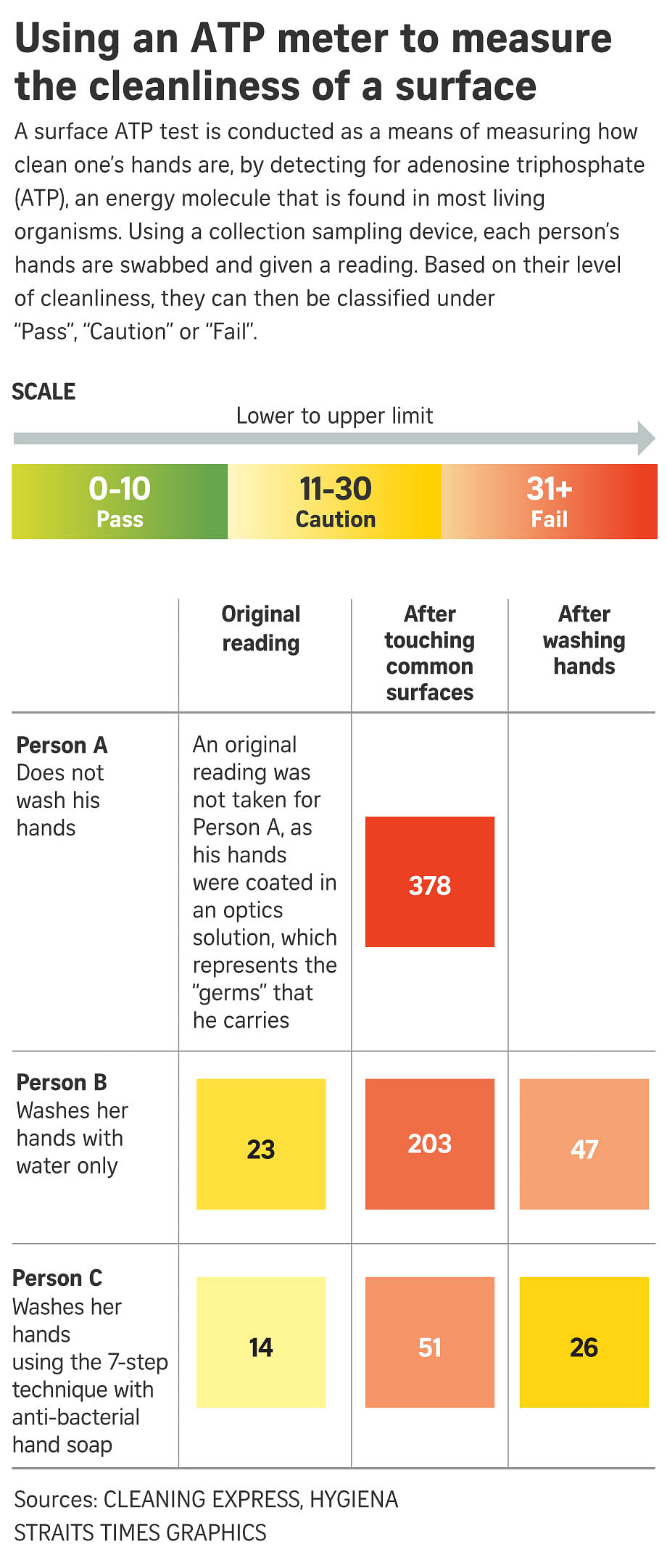Why washing hands with soap is critical in battling Covid-19
Sign up now: Get ST's newsletters delivered to your inbox
Find out how much germs are transferred onto your hands by touching surfaces and the effectiveness of thorough washing of hands.
Follow topic:
SINGAPORE - Masks are now a must for anyone stepping out, and safe distancing measures are in full throttle, but washing your hands properly remains a cornerstone of the battle against the coronavirus.
An experiment conducted by The Straits Times has shown that doing this thoroughly with soap makes a critical difference. It can reduce the amount of germs picked up on the hands by 45 per cent compared to just rinsing them with water.
Even as the multi-ministry task force tackling Covid-19 announced on Tuesday (April 14) that masks would be compulsory for those leaving home, Health Minister Gan Kim Yong stressed the importance of personal hygiene, particularly during the current period of enhanced safe distancing.
"I would continue to encourage Singaporeans to wash your hands, observe personal hygiene, which is a very critical factor in disrupting the transmission chain," he said.
An effective way of washing hands involves a seven-step process that ensures a thorough cleansing as it covers the base of one's palms to the tip of their fingers - all of which should take approximately the time needed to sing 'Happy Birthday' twice.
ST worked with professional cleaning company Cleaning Express, to see how easily germs can get on hands after touching common surfaces, and how thorough hand washing may help to dispel these germs, which include bacteria and viruses, among them Covid-19.
The experiment, conducted using common touch-points such as computers, door handles and light switches, involved three people, an optics solution as a stand-in for the germs on a surface, and an ATP meter to measure the cleanliness of a surface.
The device detects biological contamination by measuring adenosine triphosphate (ATP), the molecule found in cells.
While it does not specifically indicate the presence of viruses, it highlights where they may lurk.
The optics solution is typically used in hygiene training to demonstrate correct hand-washing techniques. When under UV light, darkened parts show unwashed areas, signalling that this was not done correctly.
Microbes such as the coronavirus are able to remain on some surfaces for days, and can be transferred onto each subsequent person touching the same lift button or ATM machine, for instance.
In the experiment, the first person touched various surfaces with unwashed hands.
Two others then touched the same items.
Afterwards, one rinsed her hands with water, while the other used soap.
The results were telling: water alone gave a cleanliness reading of 47 - her hands remained dirty, and the UV light highlighted visible stains.
The one who used soap, in contrast, got a score of 26, which is considered generally clean, and her hands were stain-free.
But her hands were still not 100 per cent germ-free.
Infectious diseases expert Leong Hoe Nam explained that to kill all the microbes on one's hands, skin disinfectants containing chlorhexidine or iodine agents - the kind used by doctors before surgery - have to be used.
To maintain one's hygiene amid the Covid-19 pandemic, however, he added that washing hands thoroughly with soap and water would be sufficient, and suggested that antibacterial soap has an added advantage.
"As viruses require physical flushing and soap detergent to break its structure, regular soap will suffice- as long as we practise the seven-step hand-washing process," he said.


